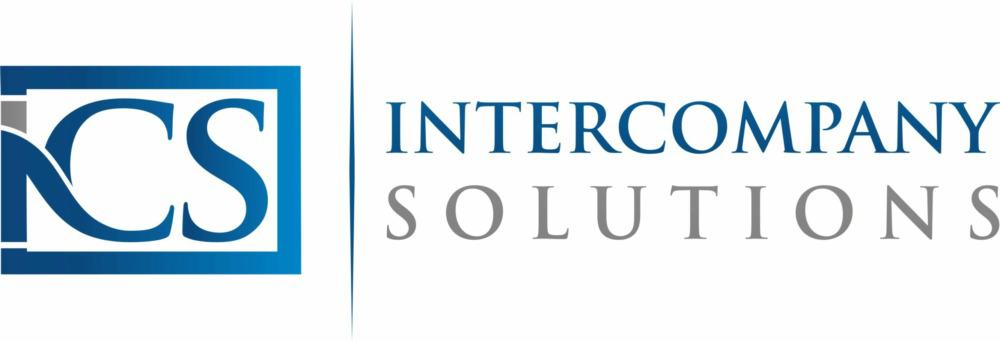
New VAT rules for e-commerce in the EU from the 1st of July 2021
If you want your Dutch e-commerce company to do business in the entire European Union, you will have to deal with different VAT rules than those that apply if you only deliver to customers in the Netherlands. A number of basic rules apply to VAT in the EU. This includes certain threshold amounts for the levying of VAT if you sell to consumers in other Member States as well as VAT registration abroad. From July 1, 2021, however, new VAT rules for e-commerce will apply. This article will explain the most important VAT rules for Dutch companies in e-commerce, such as web shops and platforms that supply to foreign consumers in the EU. This also includes dropshipping.
Basic rules that apply in the entire EU
VAT is levied in all countries within the EU. EU countries themselves determine the level of VAT rates on products. Which country is allowed to charge VAT is determined by:
- From which EU country the products are shipped
- In which EU country the products arrive
- In which country products have been imported from outside the EU
- Who the importer is: the supplier, the web shop or the customer when importing products
- If you supply to other entrepreneurs or to customers without a VAT number (consumers as opposed to registered companies)
For sales and deliveries where goods are shipped from the Netherlands to consumers in other EU countries, Dutch VAT is payable as a basis as long as you stay below a certain threshold amount. This means that you will charge your foreign customer Dutch VAT until your turnover in the relevant country reaches the applicable threshold amount.
Threshold amounts for foreign sales
Within the EU, threshold amounts have been agreed upon for the levying of VAT on sales to consumers in other Member States. This is also known as distance sales. If your turnover in another EU country exceeds the threshold amount within a year, you calculate the VAT rate for that country. You then pay the VAT there and submit a VAT return. The distance selling threshold varies by country. The Dutch Tax Authorities have more in-depth information about this.
The threshold amounts do not apply to the supply of excise goods, such as alcoholic drinks and cigarettes. The threshold amounts also don’t apply to new or almost new means of transport such as cars. Deliveries of these types of goods do not count towards the threshold amounts. With every delivery, regardless of the amount, you calculate the VAT of the country where these goods are shipped.
If you sell goods that fall under the so-called margin scheme, these deliveries do not count towards the threshold amounts. If you apply the margin scheme, you owe Dutch VAT to the Dutch Tax Authorities on the profit margin of the goods. You do not charge VAT to the customer and do not state this on the invoice, since the VAT is already included in your sales price.
Information about VAT registration
You can only calculate foreign VAT with a VAT registration in the relevant country. You will receive a VAT number from the foreign tax authorities and submit a local VAT return. Furthermore, you can also hire a tax advisor who takes care of your foreign VAT registration and declaration, ICS is always happy to assist with such tasks. Ensure timely VAT registration in the country where you owe VAT to avoid hefty fines. Even if you first paid VAT in the Netherlands, the foreign tax authorities are still entitled to the VAT owed there. You still need to pay these abroad before you reclaim the Dutch VAT.
When to use a foreign VAT rate?
When you deliver to customers in another EU country who do not submit a VAT return, such as consumers, you can always use the foreign VAT rate and file a local return. This is possible even if you stay below the threshold amount. You must submit a written request for this to the Dutch Tax Authorities.
1st of July 2021: new EU VAT directive for e-commerce
From 1 July 2021, the new EU VAT directive for e-commerce will apply. The new rules apply when you achieve an annual turnover of 10,000 euros or more with your Dutch web shop or e-commerce business from sales to consumers in EU countries outside the Netherlands. If your turnover in other EU countries remains below 10,000 euros per year, you may continue to charge Dutch VAT. With the new VAT Directive, the European Commission wants to modernize and simplify VAT taxation, create a "level playing field" for entrepreneurs within and outside the EU and combat VAT fraud on small-value parcels.
Changes that might impact your company
Implementation of the new bill has direct consequences for your business operations due to the following 3 changes:
1. No more separate threshold amounts
As of 1 July 2021, the threshold amounts for intra-EU distance sales per individual EU country will be cancelled. There will be 1 joint threshold amount of 10,000 euros. This threshold applies to all intra-EU distance sales of goods, together with sales of digital services to consumers in the EU. If your total amount of foreign sales in EU countries remains below 10,000 euros per year, as a Dutch e-commerce business you may continue to charge Dutch VAT. Just keep in mind that the transport of the shipment needs to be initiated in the Netherlands and that you need to own a branch office in an EU country.
From the moment you exceed the threshold amount of 10,000 euros, you charge the VAT rate of the EU country where your customer is located. You can arrange your foreign VAT return in 2 ways. Either you submit a local VAT return for each individual EU country to which you have sold and shipped goods, or you register your company for the 'Union Regulation' within the new one-stop-shop system of the Dutch Tax Authorities.
2. VAT exemption for imports up to 22 euros expires
When goods are imported into the EU, there exists a VAT exemption for import VAT on shipments with a value up to and including 22 euros. This exemption will expire on 1 July 2021. The EU aims to create a "level playing field" for all sellers within and outside the EU. From 1 July 2021, import VAT will be due on the import of goods into the EU, regardless of the value of the shipment. Shipments with a value up to and including 150 euros will remain exempt from import duties though.
When you sell products from outside the EU to customers who do not submit a VAT return, you must declare the VAT from 1 July 2021 in the EU country where the goods arrive. For example, when you deliver products from Taiwan through your web shop directly to consumers in Belgium, You must pay Belgian VAT on this delivery.
3. Platforms pay VAT when taking on an active role
An entrepreneur is responsible for the VAT payment on products that he or she sells to consumers via a platform. In the new VAT rules, the platforms are responsible for this VAT payment if the platform plays an "active role". But an active role is more than just bringing together supply and demand digitally. For example: facilitating orders and payments for products. The platform supports the purchase and delivery of products to private customers and is therefore due VAT in the country where the customer lives.
Furthermore, the following applies:
- When a supplier delivers goods to consumers in the EU via said platform;
- The value of the goods does not exceed 150 euros;
- The goods are imported into the EU.
If the value of the shipment is above 150 euros, the platform is also liable for VAT when it facilitates the delivery to a consumer by a non-EU-based entrepreneur and the goods go from one EU Member State to a consumer in another Member State. If you own a platform and have goods shipped directly by professional sellers from outside the EU to customers in other EU countries, you need to investigate together with your tax advisor whether you will be faced with a greater VAT obligation and liability after the introduction of the new rules.
The new ‘One stop shop’-system
Following the changes of the law, the current MOSS scheme for suppliers of digital services in the EU will be merged into the new One Stop Shop (OSS) system. As a user of the current MOSS scheme, you declare your VAT from 1 July 2021 via the new one-stop shop. You can also declare distance sales via the new portal. If you exceed the threshold amount of 10,000 euros with both deliveries, digital services and goods, you can submit your declaration via this portal. As an entrepreneur you can declare the VAT payable in other EU countries via the OSS portal of the Dutch Tax Authorities. You do this by registering for the 'Union Regulation'. You do not need a VAT registration in other EU countries.
Service providers will soon also be allowed to declare VAT via the 'Union Regulation' in the OSS portal. When you opt for the new system, you will first need to de-register his other EU VAT numbers. If you need these other VAT numbers for other sales tax-related matters, for example for the deduction of input tax, you can also choose to keep the number. You will not be able to reclaim VAT paid in these countries via the one-stop shop though. To do this, you must submit a separate request for a refund to the Dutch tax authorities. In this case a local declaration is more convenient, which will also save you extra administrative actions.
The before mentioned companies and platforms that sell products from outside the EU to consumers in EU countries and have them delivered directly can use the OSS portal. This is possible with the "Import regulation" within the portal. The Dutch Tax Authorities arranges that the VAT declared via the OSS portal is sent to the correct EU country. When you store goods for your web shop in a warehouse in another EU country, you need a VAT number from that EU country. The goods delivered by you from the foreign warehouse are taxed with local VAT. They are delivered from that country, and you cannot declare your VAT via the Dutch OSS portal. You file a VAT return in the relevant EU country.
Special information regarding the small business regulation (KOR)
The small business regulation (KOR) is a specific exemption from VAT. You can use the KOR if you are located in the Netherlands and have no more than € 20,000 in turnover during 1 calendar year. The KOR is for natural persons (sole proprietorships), combinations of natural persons (for example a general partnership) and for legal entities (for example foundations, associations and private limited companies). If you, however, exceed the threshold of 10,000 euros in turnover in EU member states other than the Netherlands with your web shop, you become liable for VAT in the relevant EU member states. At that point the VAT rules of the EU member state of your consumer apply and thus, the Dutch KOR is then no longer applicable.
You must declare this turnover in the Netherlands. You can register for the Union Regulation within the one-stop shop, or you can register locally for VAT and file a local tax return. For example, if you also purchase in the relevant country with local VAT, this might prove to be cheaper. You can then deduct the VAT paid directly in your tax return. The turnover on which you file a declaration locally in another EU country does not count towards the KOR. You can continue to apply the KOR until you reach a turnover of 20,000 euros in the Netherlands. If your annual foreign turnover in the EU remains below 10,000 euros and this turnover, together with your Dutch turnover, does not exceed 20,000 euros, you may continue to work under the KOR. In that case, you do not calculate VAT and also do not declare VAT.
Customs legislation for e-commerce shipments
In addition to the VAT rules, customs legislation for e-commerce shipments will also change from 1 July 2021. An electronic import declaration is required for all shipments with a value up to 150 euros. In addition, new regulations will be added for these small shipments that are currently being further elaborated. Suppliers who directly deliver goods from countries outside the EU can, under certain conditions, use the 'Import regulation' within the OSS portal. With this Import Regulation, a supplier submits a VAT return in 1 EU country. This arrangement only applies to shipments with a value of up to 150 euros. Instead of import VAT, the supplier directly pays the VAT applicable in the country of destination via the one-stop shop.
Customs agents, transport and postal companies will have a different regulation if companies do not use the Import regulation. In this case, customs at the EU border will estimate the value of the shipment. Companies collect the VAT due directly from the consumer. They report the import VAT owed on a monthly basis and pay this via an electronic declaration. This also only applies to shipments with a value up to 150 euros. Read more on E-commerce in The Netherlands.
Implementation of these new rules
The One Stop Shop, or OSS, consists of 3 voluntary regulations:
- The "Union Regulation" for EU-based companies with at least 1 branch office or subsidiary in an EU country. This regulation applies to intra-EU distance sales and services.
- The "non-Union Regulation" for companies established outside the EU without an establishment within the EU. This regulation applies to services.
- The "Import regulation" for distance sales of non-EU goods with a maximum value of 150 euros.
The Dutch Tax Authorities will support the one stop shop system from 1 July 2021. The organization has set up an "emergency track" for this purpose. This means that you can use the above regulations, subject to some restrictions:
- Data is partly processed manually. This increases the chance of errors.
- Declarations and registrations have a longer turnaround time.
Manual processing can result in incomplete exchange of information with other EU countries. The tax authorities indicate that any delays caused by the system have no consequences for the VAT payment to the other EU country. For example, a delay will not result in a fine from the other EU country. A declaration via your software package, also called system-to-system, is not possible within the emergency track.
Using the one-stop shop
Your declaration and registration for the aforementioned regulations is done via My Tax and Customs Administration, tab EU VAT one-stop shop. For your registration and declaration you need ‘eRecognition’ (eHerkenning). If you have a sole proprietorship, you can use DigiD. You can register for the Union Regulation and Import Scheme from 1 April 2021.
If you do not yet have eHerkenning for your company, apply for it in time. When you purchase an eH3 login tool for your registration for the new OSS portal, you may be able to claim the "Compensation scheme eHerkenning Belastingdienst". If you are entitled to the scheme, the compensation amounts to 24.20 euros including VAT per year.
Make sure you are prepared for the coming changes
The new threshold amount of 10,000 euros is much lower than the current threshold amounts per country. As a result, you are more likely to owe VAT in another EU country than right now. The new entry rules have consequences for your business operations. You will need to map out in which countries your customers live, how much turnover you achieve in which EU country and which VAT rate applies. EU countries have different VAT rates. This has consequences for your product price per country. Make adjustments to your ERP system for correct administration and invoicing. Also check how you display the different product prices in your web shop. When visiting your web shop, your customer wants to see a correct price including VAT. Consult with your accountant or supplier of the system what options you have for this. Consider whether you use one of the voluntary schemes or opt for a local VAT registration in the individual EU countries. Make sure you have your registration and systems in order before 1 July 2021.
Intercompany Solutions can assist you with any needed changes
If you need to make new calculations, or find out if these changes will affect your company, we can aid you in retrieving the necessary information and personal advice for your Dutch company. We can also assist you with company accounting and VAT registration, the entire financial aspect of your company or branch office in the Netherlands and any other specific questions you might have.
Sources:
1. https://ec.europa.eu/taxation_customs/business/vat/modernising-vat-cross-border-ecommerce_en
2. https://home.kpmg/us/en/home/insights/2021/04/tnf-eu-vat-rules-affecting-e-commerce-sellers-marketplaces.html
3. https://www.bakertilly.nl/




